Introduction
Use this guide to remove the rear glass of the Samsung Galaxy S9 Plus.
Opening the Samsung Galaxy S9 Plus will damage the waterproof sealing on the device. If you do not replace the adhesive seals, your phone will function normally, but will lose its water-protection.
You’ll need replacement adhesive to reattach components when reassembling the device.
Tools
Parts
-
-
Switch off your phone.
-
Use an iOpener to loosen the adhesive beneath the rear glass. Apply the iOpener for at least two minutes. You might want to repeat this step several times during the back cover removal.
-
-
-
In the following steps, you'll be cutting through the adhesive securing the back cover.
-
You'll be slicing through the adhesive in the areas shown:
-
Thick portions of adhesive
-
Thin areas of adhesive
-
Avoid prying or slicing in this area, to protect the fingerprint sensor flex cable.
-
-
-
Press a suction cup onto the back cover.
-
Lift the back cover's bottom edge with your suction cup, opening a slight gap between the back cover and the frame.
-
Insert an opening pick in the gap and slide it to the bottom right corner.
-
-
-
Insert a second opening pick and slide it to the bottom left corner.
-
Insert a third opening pick at the bottom end of the phone. This opening pick stays there during the rear glass removal procedure to prevent the adhesive from resealing.
-
-
-
Start to slide the tip of the opening pick from the bottom left corner along the side of the S9 Plus.
-
Leave the opening pick in its place after you cut the adhesive half way up the left side of the phone.
-
Slide the opening pick from the bottom right corner half way up the frame and leave it there.
-
-
-
Insert a fourth opening pick at the right side of the frame and slide it to the top right corner.
-
Slide a fifth opening pick along the left side of the phone to the top left corner.
-
Use the opening pick to cut the remaining adhesive under the upper part of the rear glass.
-
-
-
Carefully lift the side of the rear glass where the volume button is located.
-
Use the edge of a spudger to pry up and disconnect the fingerprint sensor flex cable.
-
Secure the new back cover with pre-cut adhesive or double-sided adhesive tape.
To reassemble your device, follow these instructions in reverse order.
After installing the rear cover, apply strong, steady pressure to your phone for several minutes to help the adhesive form a good bond, such as by placing it under a stack of heavy books.
After you've completed the repair, follow this guide to test your repair.
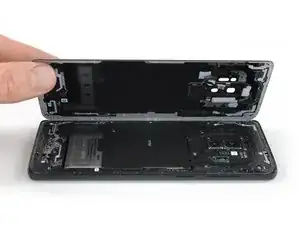
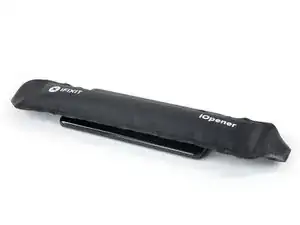
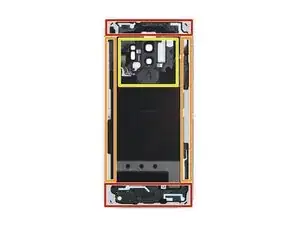
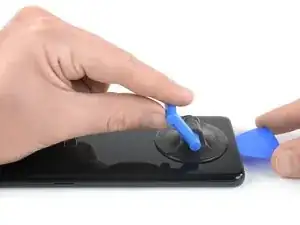
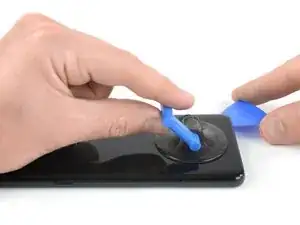
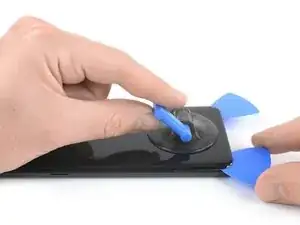
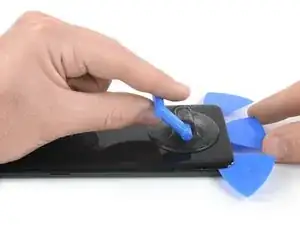
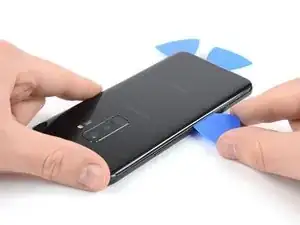
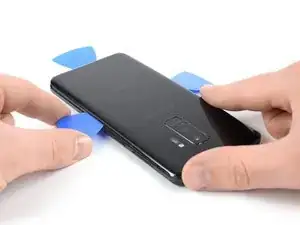
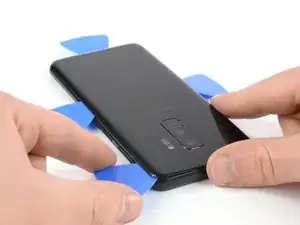
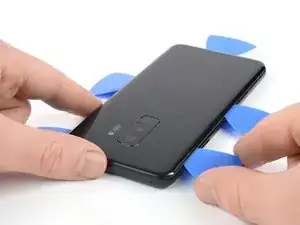
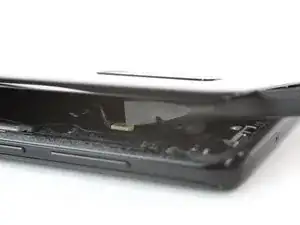
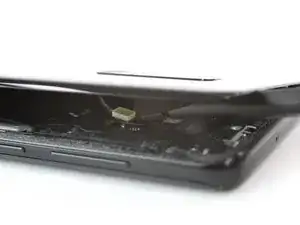
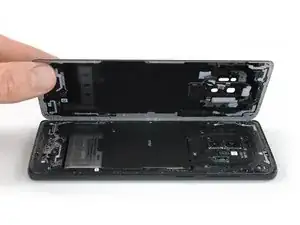

I don't know how much longer should I use for the min heat gun.
Hui Chen -
Only heat it up so you can still handle the phone. That depends on your heat gun. Wearing (ESD-)gloves might give you some extra degrees.
Tobias Isakeit -
It is very very hard to remove the back glass due to the adesive… I don't know if it is possibile (at least for everyone) to remove it wothout broking the glass
Luigi -
This is nearly impossible without breaking the glass or risking overheating. I would say apply heat repetitively for 6-8 minutes. The very most adhesive is across the bottom so push the pry stick way in. I generally start on the rear side.
Thomas Hayes -
Whoah NO. It will damage the camera and other sensitive electronics.
D Harlo -
Heating the back is essential, challenging, frustrating and, for first-timers such as myself, seemingly impossble, but I will say don't give up...I'll have another comment later.
cbclistener -
I tried with the iopener but I gave in after three attempts. I then used a hairdryer and a pizza oven infrared thermometer, heating in increments. 60C did the trick and I was able to get the first pick in. Further heating was necessary to ease the rest of the back off, all to 60C.
Chris Harrison -